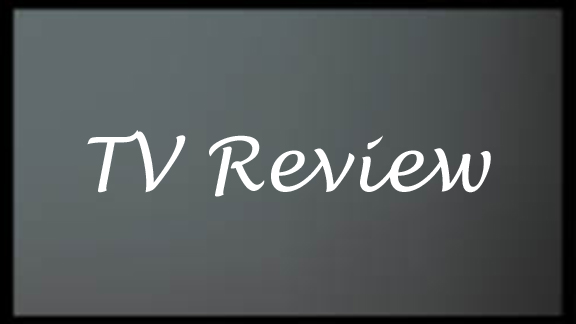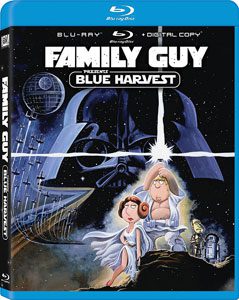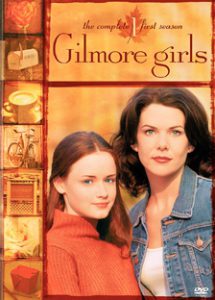As fans know, “Gilmore Girls” is richer than its hook of “A mother and daughter who also happen to be best friends.” But any thorough review of Season 1 (2000-01, The WB) — which I embarked on to relieve the pain of the cancellation of Amy Sherman-Palladino’s “Bunheads” — has to acknowledge how unusual this notion was on TV at the time, when the majority of shows emphasized generational disconnect.
A breath of fresh air for the 2000s
Even on “Buffy,” which so nicely portrayed the love of Buffy and her mom, the relationship was shakily built on secrets; and heck, we hardly even meet the parents of Buffy’s friends. “Dawson’s Creek” and “Freaks and Geeks” likewise portrayed parents who just didn’t get it, and “My So-Called Life” had done the same a few years prior.
So “Gilmore Girls” was a breath of fresh air. And aside from one early moment — Lorelai gets mad at Rory borrowing her sweater without asking in episode 3 — the writers quickly decided to embrace their premise. Ten episodes later, Rory tells her pack-rat mom to get rid of any clothes she’d be embarrassed to be wearing in a car accident, flipping the traditional parent-child roles.

“Gilmore Girls” Season 1 (2000-01)
WB, 21 episodes
Creator: Amy Sherman-Palladino
Stars: Lauren Graham, Alexis Bledel, Scott Patterson
Adding important depth, though, is the relationship between Lorelai and HER mom, Emily — a funny, painful portrayal of the generation gap. In listing positive attributes of “Gilmore Girls,” I have to start with Lauren Graham, because the ways Lorelai behaves around Emily, Rory, Luke, Sookie, etc., are all so different (in real life, we all adopt personalities to fit the audience to some degree), and yet she’s consistently, lovably Lorelai.
In this first season re-watch, the caffeinated fast-talking didn’t strike me too much, perhaps because newer shows have taken up this style of witty, word-heavy writing, which famously made “Gilmore Girls” scripts 50 percent longer than the industry norm. The show never feels like it’s moving too fast; indeed, it takes the time for many “extra” moments, such as Emily sweetly saying to Richard, “Well, I guess it’s just the two of us” after Rory and Lorelai depart in episode 20.
In a season-long sense, the storylines have room to breathe; it’s just that there are a lot of them. While a few early episodes emphasize quirky plots (a low point is the inn hosting a double wedding in “Kill Me Now”), the writers soon let characters provide the momentum through their own mistakes or through things happening to them.
Romances, of course
And of course, this means — in part — romances. On this re-watch, there was more substantial Luke-and-Lorelai stuff than I recalled. Sure, there are enough “they almost confess their love for each other but are interrupted” scenes to fuel a drinking game, but there are also genuine admissions that they care for each other.

In “Christopher Returns” (15), when Lorelai shows up at Luke’s Diner in her PJs to apologize for forgetting about their painting date, we’re palpably watching two people who love — and hate hurting — each other. Emily says in “Forgiveness and Stuff” (10), “You’re idiots, the both of you,” for not getting together, yet for viewers, Luke-and-Lorelai was the most giggle-worthy part of the first season (Whether it’s strung out too much in later seasons is a debate for future posts).
Another surprise this time around was how genuine the Rory-Dean relationship is. It’s Rory’s first love, and we as viewers are right there with her in “Kiss and Tell” (episode 7) when Dean kisses her, she says “Thank you,” and then a single-camera shot follows her running over to Lane’s house.
Same thing in “Star-Crossed Lovers and Other Strangers” (16) when Dean says “I love you, Rory” and Rory says “I love … the car.” This whole Dean thing is happening to Rory — and she loves that it’s happening, and possibly loves Dean — but she’s just not ready to acknowledge adult things like loving someone.
And how about Lane as a foil for Rory? She also has a running-through-town scene in “Love and War and Snow” (8); however, it comes after she embarrasses herself by impulsively running her hand through a boy’s hair, and when she gets to Rory’s place, her friend isn’t home. With her overbearing religious mother, Lane is the biggest trouper among “Gilmore Girls” characters. The way she hides CDs under her floorboards and makes her walk-in closet into a bedroom is amusing, but also kind of sad and heroic.
Stars Hollow: The best character?
Speaking of favorite characters: The town of Stars Hollow itself is certainly an acceptable answer. It’s a purposely stylized fictional town, conveniently located 30 minutes from Hartford, with an old-time-movie vibe (town-hall meetings attended by everyone, rival troubadours, a dance studio that has no business staying afloat in such a small town — which, by the way, still has absolutely everything a person needs).
Scenes like the snowscape of “Love and War and Snow” and the founders’ festival of “Star-Crossed Lovers” put the lie to the notion that location shooting always trumps Hollywood soundstages.
From this first season, “Gilmore Girls” was a great show because of the trials of Rory and Lorelai and everyone in their orbit. However, the thing that made it almost impossible for a bad episode to happen was this place that we all wanted to move to despite knowing that it’s a world of pure fantasy.
Here are my rankings of the 21 episodes of Season 1:
1. “Kiss and Tell” (episode 7, written by Jenji Kohan)
This is the perfect “Gilmore Girls” episode, as a viewer absolutely feels Rory’s emotional journey with Dean. The second part of the episode is just a gathering of Lorelai, Rory and Dean watching “Willy Wonka” in the living room, but the hyper-awareness of Rory and Dean is so palpable that those butterflies could fly right through the screen.
2. “Love and War and Snow” (8, Joan Binder Weiss)
Lorelai and Max’s walk through the snow is beautiful, but what really gets me is Luke seeing them from a distance as he serves drinks to the shivering Civil War re-enactors.
3. “Love, Daisies and Troubadours” (21, Daniel Palladino)
Max’s 1,000 yellow daisies to Lorelai is the big visual moment, but I’m partial to Rory’s “Because I love you, you idiot.” I don’t think it’s a coincidence how one scene is deliberately staged and the other is spur-of-the-moment — similar to Luke’s outburst in the foyer with Max, now that I think about it.
4. “The Breakup, Part 2” (17, Amy Sherman-Palladino)
Rory putting off crying about her breakup with Dean gives some suspense to this episode, leading to an appropriate conclusion where a kiss with Tristin finally sets her off.
5. “Forgiveness and Stuff” (10, John Stephens)
This is a heartfelt hospital-set episode of characters unable to verbally express how they feel — notably Lorelai toward her dad — yet showing it through their actions (Luke driving Lorelai to the hospital).
6. “Star-Crossed Lovers and Other Strangers” (16, Stephens and Linda Loiselle Guzik)
The perfection of Rory and Dean’s three-month-anniversary date blows up in a beautifully staged scene where Rory can’t return his “I love you” in the (oddly romantic) junkyard.
7. “Rory’s Dance” (9, Sherman-Palladino)
One of my favorite lines of the series is Dean responding to Tristin’s question of why he won’t fight him with “Because I’d kill you, you idiot.” Tristin is indeed a jackass, but it’s hard not to relate to his longing for Rory.
8. “Christopher Returns” (15, Palladino)
I love that Christopher’s parents — who even Christopher calls “ass—-s” — are named Straub and Francine. It just perfectly summarizes the generation gap. By the way, Lorelai is dead on with her reasoning of why she can’t marry Christopher — the Offspring is his favorite band.
9. “P.S. I Lo…” (20, Elaine Arata)
It’s touching to see Emily (in her restrained way) so happy that Rory chooses her house as the escape valve after an argument with Lorelai. This is one of the best “Gilmore girls fight then get back together a couple acts later” episodes.
10. “Concert Interruptus” (13, Arata)
The Bangles! Plus, Madeline and Louise are in fine form, skipping out on the concert to go to a party with strange big-city boys. And Paris gains humanity points by telling Rory this was the best night of her life.
11. “Rory’s Birthday Parties” (6, Sherman-Palladino)
The titular gatherings nicely contrast Emily’s world with Lorelai’s. And Emily gets her first major humanity points of the series by noting that Lorelai was right, she doesn’t know her daughter at all, as she and Richard drive back to Hartford.
12. “That Damn Donna Reed” (14, Palladino and Sherman-Palladino)
Based on her DNA, it’s inexplicable that Rory is a good cook, but she does look extremely cute in that apron. Also, the scene of Luke trying to track down the loose chick in the Gilmore house is rife with classic “almost” L&L moments.
13. “Emily in Wonderland” (19, Stephens and Guzik)
Emily visits Stars Hollow and loves it, albeit not exactly the same things Rory loves about it, like the (rather large) shed where she and Lorelai used to live. To Rory’s consternation, Emily connects with Michel and Mrs. Kim.
14. “Cinnamon’s Wake” (5, Palladino)
This is the first episode where we see the camaraderie of Stars Hollow as everyone gathers for the wake of Babette’s cat. It’s also an interesting road not taken when Babette has a metaphor-laden chat with Lorelai about life. “Gilmore Girls” would soon settle on a more straightforward approach to storytelling.
15. “Double Date” (12, Sherman-Palladino)
Lane just can’t catch a break, as the guy she has a crush on turns out to be boring. (Meanwhile, every guy watching at home is like “I’ll talk about music with you, Lane!”)
16. “Kill Me Now” (3, Joanne Waters)
Rory golfs with her grandfather and then takes a steam bath while a couple of old ladies gossip. “Gilmore Girls” tries a rare light-on-dialogue approach to generation clash stories in this early episode.
17. “Paris is Burning” (11, Binder Weiss)
Paris, becoming more sympathetic as we meet her awful mom, spreads the news of Max and Lorelai in order to embarrass Rory. Not much happened with this down the road, which I guess is indicative of high schoolers’ short attention spans.
18. “The Deer Hunters” (4, Jed Seidel)
Late for an exam after a deer runs into her Jeep, Rory finally snaps at Tristin in the first scene where Alexis Bledel really gets to do some serious acting.
19. “The Lorelais’ First Day at Chilton” (2, Sherman-Palladino)
We’re introduced to the flustered side of Lorelai as her fuzzy alarm clock doesn’t go off, it’s laundry day and she shows up to Rory’s posh new school looking like a cowgirl.
20. “Pilot” (1, Sherman-Palladino)
This lovely pilot episode sets up all the major premises (Friday dinners, Chilton, Dean) while also struggling to find long-term footing. For example, Sookie is portrayed as an extreme klutz, something that would be toned down.
21. “The Third Lorelai” (18, Sherman-Palladino)
We meet Richard’s mom and find she’s even more stiff and proper than Emily and Richard. It’s fun to see Emily hit a brick wall with her mother-in-law, allowing Lorelai to feel a connection to her.
How would you rank the 21 episodes of the first season of “Gilmore Girls?”
More “Gilmore Girls” reviews:

